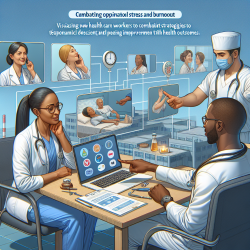Introduction
The Sandy Hook tragedy left an indelible mark on Newtown, Connecticut, and its aftermath highlighted the critical need for sustainable child and family service systems in communities affected by mass tragedies. The research conducted by Hoagwood et al. (2017) offers valuable insights into creating a resilient service infrastructure that can support families and children in the wake of such events. This blog explores the key findings from the study and how practitioners can implement these lessons to improve service delivery in their own communities.
Understanding the Research
The study conducted by Hoagwood and colleagues aimed to assess the existing community services in Newtown post-Sandy Hook and develop a sustainability plan for future service delivery. Through interviews with service organizations, providers, and families, the researchers identified the strengths and weaknesses of the current system and proposed recommendations for improvement.
Key Findings
- Centralized Access: A centralized point of access for services was identified as a core component of an ideal service system. This approach ensures that families can easily navigate the available resources without being overwhelmed by multiple entry points.
- Coordinated Care: Effective coordination among service providers is essential for delivering comprehensive care. The study found that collaboration across agencies can prevent service duplication and ensure that families receive the most appropriate interventions.
- Personalized Services: Tailoring services to meet the specific needs of families is crucial. The research highlighted the importance of offering evidence-based treatments that are customized to address the unique challenges faced by victims of tragedies.
Implementing the Lessons
Practitioners can enhance their service delivery by incorporating the following strategies based on the research findings:
- Develop Centralized Systems: Establish a single point of entry for accessing services to streamline the process for families. This can be achieved through a centralized hotline or an online portal that connects families with the appropriate resources.
- Foster Interagency Collaboration: Create partnerships among local service providers to facilitate information sharing and coordinated care plans. Regular meetings and joint training sessions can strengthen these collaborations.
- Focus on Evidence-Based Practices: Prioritize the use of interventions that have a strong evidence base for treating trauma and related mental health issues. Training staff in these practices can improve service quality and outcomes for families.
- Engage Families in Service Design: Involve families in the planning and evaluation of services to ensure that their needs are being met. Feedback mechanisms, such as surveys and focus groups, can provide valuable insights for service improvement.
Encouraging Further Research
While the Sandy Hook study provides a comprehensive framework for developing sustainable service systems, ongoing research is necessary to refine these strategies and adapt them to different community contexts. Practitioners are encouraged to engage in research initiatives that explore innovative approaches to service delivery and evaluate their effectiveness in real-world settings.
Conclusion
The lessons learned from Sandy Hook underscore the importance of building resilient and sustainable service systems that can support children and families in the aftermath of community tragedies. By implementing the research findings and continuing to explore new strategies, practitioners can enhance the quality and effectiveness of their services, ultimately leading to better outcomes for the communities they serve.
To read the original research paper, please follow this link: Developing a sustainable child and family service system after a community tragedy: Lessons from Sandy Hook.










